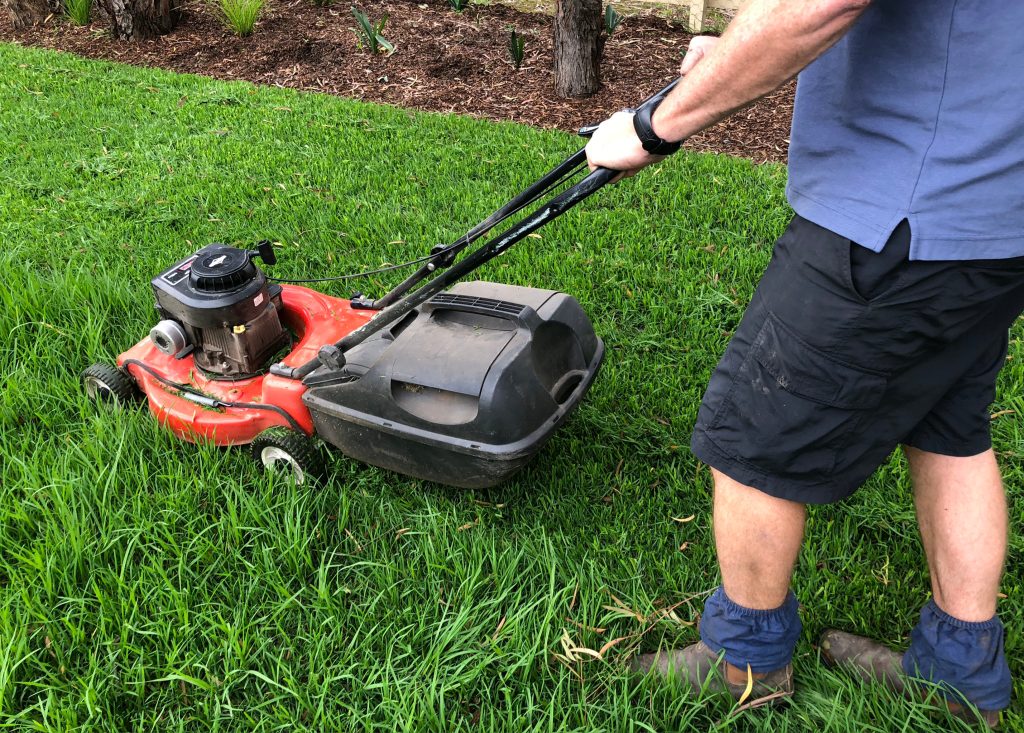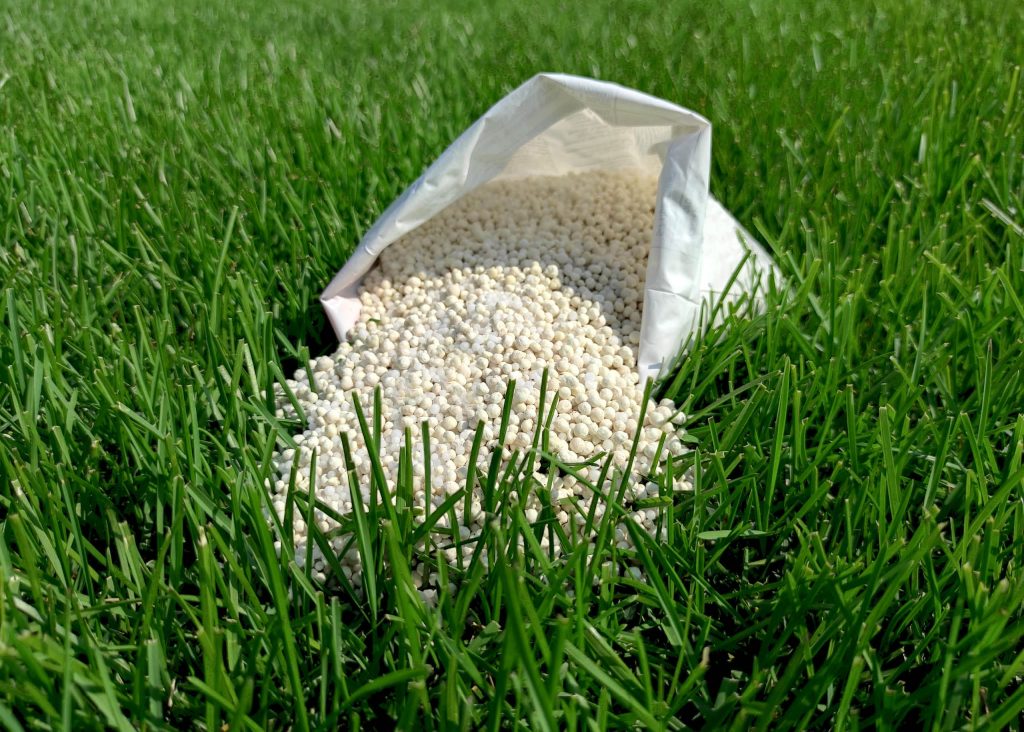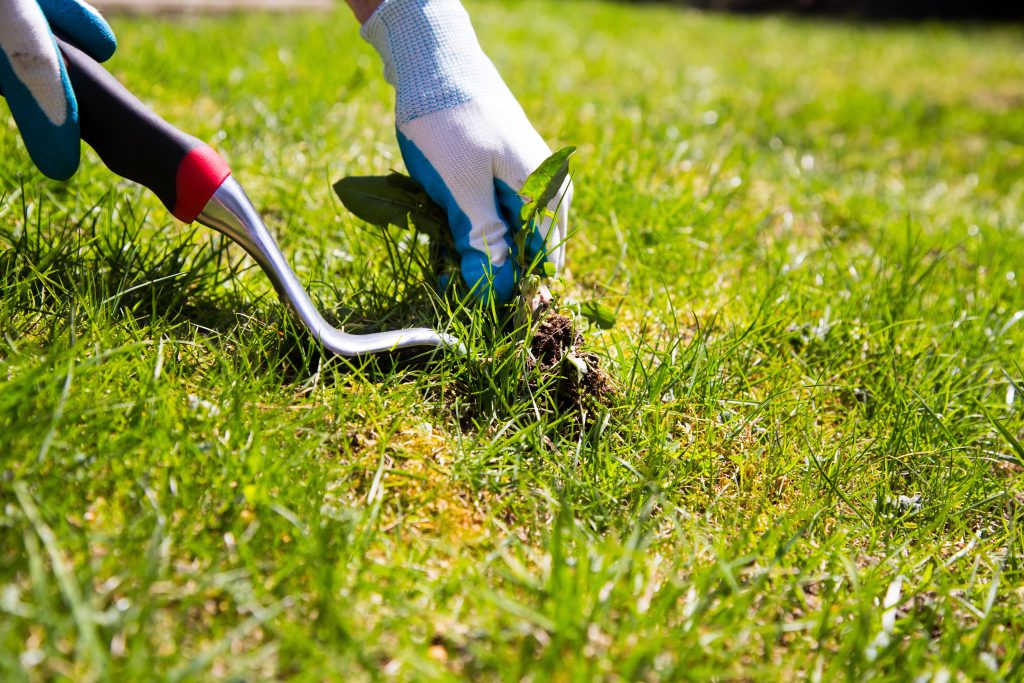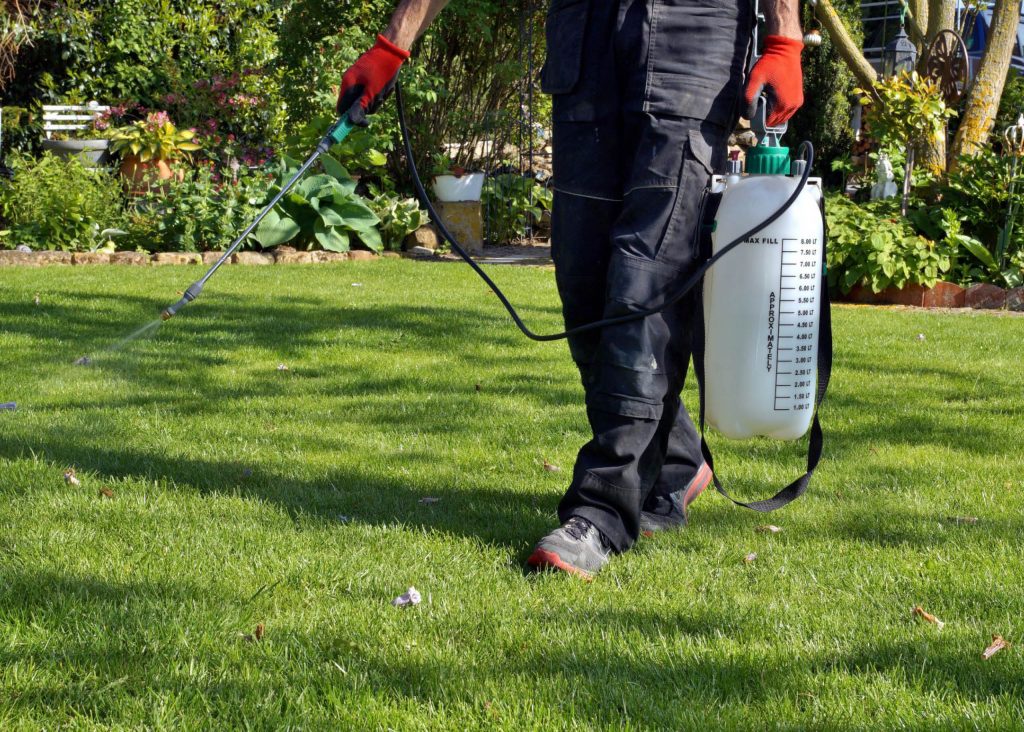Couch Grass- Your Guide
Couch grass, sometimes referred to in other markets as ‘Bermuda Grass’ and less frequently by its scientific name Cynodon dactylon, has been a staple of the Australian lawn ...

Kikuyu is one of the most sighted grass types in suburban Australia thanks to its prolific use on sporting fields and for landscaping in public areas. It’s favoured for use in these large-scale applications because of its fast growth, which makes it quick to repair.
Its appeal lies in the volume in which it can be grown; it is cheaper to produce when compared to more “boutique” varieties and combined with its hardy nature, make it a popular choice for domestic applications.
In recent years Kikuyu grass has shaken off its scruffy image and proven it can be manicured into a beautiful home lawn, the aesthetic of which can rival fine leaf turf grasses.
Kikuyu’s African origins meant it adapted quickly to the Australian climate. It’s an aggressive grower and will outcompete other turf varieties. Like Couch, Kikuyu roots can travel great distances underground and pop up in neighbouring lawns, but this supercharged growth makes it appealing for active families, those with pets or grassed areas with high traffic.
To the untrained eye, the Kikuyu leaf can look like Buffalo at a glance however the Kikuyu blade comes to a distinct pointed tip. It’s also typically a lighter shade of green than the lush, deep green of Buffalo grass and is less susceptible to dormancy during winter or frosty periods.
Premium Kikuyu hybrids like Kenda Kikuyu are less invasive thanks to being engineered to produce no seed head. It’s specially bred for premium domestic applications with a softer leaf and enhanced colour when compared to common Kikuyu.
Kikuyu was initially imported from Africa with a vision of a quick repairing, dense cattle feed however its agricultural applications are far more reaching than simply feeding cows.
Kikuyu’s aggressive growth and dense root system, combined with the fact that the hardy grass variety will grow almost anywhere including highly sandy soils, make it a highly effective soil stabiliser. This is a particularly attractive trait in drought-ravaged farming areas where less drought tolerant plants die off easily, allowing the precious topsoil to dry out and be stripped away by harsh winds.
Kikuyu’s robust root network contributes to its High Drought Tolerance thanks to its ability to seek out subterranean water sources, while its fast-growing above ground runners maximise the plant’s uptake of any water available on the surface.
This rapid growth rate also helps it outcompete rival turf breeds in periods of drought.
While it seems like nothing could slow Kikuyu’s unbeatably quick growth, it’s hampered only by its requirement for at least five hours of sun per day meaning it suffers in heavily shaded areas. However, in lightly shaded areas and those where competition for water is high (like at the base of an established tree) Kikuyu can be a strong performer.
When assessing how shaded an area is likely to be, it’s important to view the area throughout the day as the sun makes its way across the sky, noting areas of shade and full sun at various times. It’s possible for things like the eaves of the house, your fence or surrounding trees and buildings to cast shadows and plunge an area into shade and all of this needs consideration for suitability.
Kikuyu’s adoption for parks and public spaces due to its high wear tolerance and quick recovery, makes it perfect for domestic applications with active pets or well-used backyards. It even earned a spot on our Best Hard Wearing Grass list.
Kikuyu’s growth during the most active period in spring and summer is almost unstoppable and the fact that it’s less prone to winter dormancy means that it’s quicker to repair than other turf varieties in the colder months, too.
Premium Kikuyu varieties, like Kenda, have been specially selected for the Australian climate as they offer a richer green colour than common Kikuyu. Thanks to its resistance to winter dormancy, Kenda Kikuyu is less likely to lose condition in the colder months meaning a greener lawn, all year round.
Kikuyu grass is suitable to lay at any time of the year, including the cooler months. However, laying turf in the active growing months between spring and summer will allow the lawn to mat more quickly, meaning you’ll be mowing and enjoying your lawn sooner.
Kikuyu grows best in moderate climates and will need extra attention to see it reach its full potential in more tropical parts of Queensland but will grow happily everywhere from southern Queensland to Victoria and everywhere in between.
 Kenda Kikuyu is a premium Kikuyu variety that’s renowned for its darker green colouration compared to common Kikuyu. It’s quick to establish thanks to its underground root system (rhizomes) that are four times as large as common varieties, while its above ground runners (stolons) quickly tiller out, helping the grass to establish quickly and help to make it incredibly water efficient.
Kenda Kikuyu is a premium Kikuyu variety that’s renowned for its darker green colouration compared to common Kikuyu. It’s quick to establish thanks to its underground root system (rhizomes) that are four times as large as common varieties, while its above ground runners (stolons) quickly tiller out, helping the grass to establish quickly and help to make it incredibly water efficient.
As well as being suitable for backyards where kids or pets play, Kenda Kikuyu is also suitable for high traffic areas because it repairs quickly, whilst remaining soft underfoot. It has been engineered to produce low or no seedhead, making it a great low-allergen option.
Kenda Kikuyu will establish quickly and represents a great value proposition for those looking to lay their first lawn or turf a large area.
Expect to pay: Between $9 and $16 per square metre.
For expert advice on the right grass selection for your home, speak to your local turf farmer or supplier. Use Find a Turf Supplier to locate a supplier in your area.
Nathan Tovey is myhomeTurf’s resident expert. Decades of experience in the industry has culminated in a role which sees him work alongside turf growers all around the country to provide better quality grass to home lawn owners. Put simply, he’s the man to ask about getting the best out of your lawn.
Here are his top tips for Kikuyu:
1. A healthy lawn starts with healthy soil. For established lawns, bio-stimulants like Rootmaxx or Kelp-ER are like a probiotic for your lawn and keep your soil full of the microorganisms and healthy bacteria that keep your soil full of the nutrients that your lawn needs.
If you’re laying a new lawn and notice that your soil isn’t a healthy, dark brown, if it’s full of clay or debris or if it’s rock-hard and difficult to dig through, consider bringing in 5-10cm of quality turf underlay and planting on that instead.
2. Water the right way. Too little water too often will encourage the plant’s roots to prioritise water at the soil layer, instead of plunging deeper into the earth. Longer roots accessing water deeper in the soil will lead to a healthier plant – one that’s more resilient to temperature extremes, and one that will recover more quickly from bug attacks or other stress.
Give your lawn long, deep watering, less frequently for the best results.
3. Have a maintenance plan. As well as scheduling your watering and mowing, a good lawn maintenance program should include the ongoing use of quality slow release fertilisers, a pre-emergent herbicide and pest protection like Acelepryn, at the very least! The difference between a good lawn and a great lawn is always the extra work the owner is willing to do, and modern lawn care products are cheap and easy to apply.
Be more proactive than reactive with your maintenance – you’ll save money in the long run and have a consistently better lawn as a result.
 To keep up with Kikuyu’s unstoppable growth you’ll need to stay on top of your mowing schedule and, in the peak of the growing season, it’s not unreasonable to be mowing your Kikuyu lawn at least once a week – especially if summer storms and warm ground temperatures combine for perfect growing conditions!
To keep up with Kikuyu’s unstoppable growth you’ll need to stay on top of your mowing schedule and, in the peak of the growing season, it’s not unreasonable to be mowing your Kikuyu lawn at least once a week – especially if summer storms and warm ground temperatures combine for perfect growing conditions!
Kikuyu can be mowed using a traditional rotary mower or a cylinder mower, and while conventional wisdom was that Kikuyu wanted to be left longer, it can also be mowed low and tight on flatter lawns.
If mowing with a cylinder mower, heights between 12-35mm can be achieved and, with a rotary lawn mower, it’s not unreasonable to cut between 15-40mm, however your lawn will be at its most resilient to shading and environmental stress (water, heat, cold…) if it’s left a little bit longer. As a bonus, you’ll also get to enjoy more of that luscious, green Kenda leaf if it’s longer!
Some Kikuyu varieties can suffer from thatch, which is a build-up of dead plant matter between the green plant canopy and the soil. Most healthy lawns and soil ecosystems will work together to manage thatch effectively, in fact it’s an important line of defence that helps with things like frost tolerance. However, if the thatch layer gets out of control, Kikuyu can be renovated with a light dethatching or scarification, a process of cutting vertically into the canopy using specialised machinery to thin out the thatch layer. Think of it like running a comb through your hair!
While Kikuyu might be a great drought tolerant option, it will always be at its healthiest with a regular watering schedule.
When first laid, it’s important to keep the grass well-watered to minimise the stress associated with cutting, transporting and relaying the turf, and a regimented watering schedule will help the grass to mat down to the soil – be sure to read our Guide to Watering A New Lawn for more information.
Overwatering a lawn can be just as detrimental to the health of the plant as underwatering and can lead to nutrient wash (diluting the nutrients in the soil necessary for soil and plant health) or fungal issues.
Underwatering a lawn can lead to moisture stress, even in hardy lawns like Kikuyu. Moisture stress can be diagnosed by the leaf of the plant losing volume and becoming limp, then a reduction in the vibrant colour of the lawn. In extreme cases, the condition of the lawn can suffer so badly that it will appear to die off and, in extreme cases, can cause the soil to go hydrophobic and resist attempts at rehydration.
To avoid this, we compiled all our best lawn watering advice in the comprehensive Dos and Don’ts of Lawn Watering article.
During spring and summer, we recommend watering your lawn for around twenty minutes, two to three times a week as needed, based on the climate. You can reduce this to once or twice a week during autumn and winter as the weather in your region dictates, remembering that wind can dry a lawn out just as quickly as the scorching summer sun.
 Adding additional nutrients to your lawn is a fantastic way to improve the colour and overall condition of the plant, and while some lawn owners might only apply a granular fertiliser to kickstart growth at the beginning of spring, the fact is that ongoing product application – along with regular mowing and watering – is the key to making your lawn the envy of the street!
Adding additional nutrients to your lawn is a fantastic way to improve the colour and overall condition of the plant, and while some lawn owners might only apply a granular fertiliser to kickstart growth at the beginning of spring, the fact is that ongoing product application – along with regular mowing and watering – is the key to making your lawn the envy of the street!
Because of their naturally fast growth, Kikuyu lawns don’t need an excessive amount of Nitrogen (the ‘N’ part of the ‘NPK’ breakdown on your fertiliser, often present in the form of Urea), so don’t feel compelled to buy a nitrogen heavy fertiliser to get the best out of your Kikuyu lawn. Instead, look for something a little more balanced and- for an extra kick of colour- find a granular fertiliser with some Iron (Fe) which will help turn your Kikuyu an even darker shade of green. Be careful when using products containing Iron around unsealed concrete or porous surfaces though, as Iron can stain some surfaces a nasty shade of brown.
A product like LawnPride Maintain is high in Nitrogen and will drive rapid growth for those who love to mow, while a product like LawnPride Turfmaxx is lower in Nitrogen but higher in Potassium, promoting overall plant resilience. Both benefit from Iron for an instant colour kick.
Depending on the climate in your area, a slow-release granular fertiliser will last approximately two months before reapplying, and you can spike nutrient levels in between granular fertiliser applications by spoon feeding a quality liquid fertiliser for even better results.
All granular fertilisers will need to be thoroughly watered in to avoid Nitrogen burn on the leaf of the plant, and check application instructions on the label of your product before you apply. Also read our How to Fertilise Guide for our top tips.
 Given how fast it grows and how competitive Kikuyu grass naturally is, it’s less likely to suffer from invasive weeds than some other grass varieties but that’s not to say that it’s totally impervious. Kikuyu outcompetes most weeds but will be most at risk from aggressive seasonal weeds like clover or bindi, but the easiest way to treat these weeds and any other nasties that threaten your Kikuyu lawn is before they even pop up.
Given how fast it grows and how competitive Kikuyu grass naturally is, it’s less likely to suffer from invasive weeds than some other grass varieties but that’s not to say that it’s totally impervious. Kikuyu outcompetes most weeds but will be most at risk from aggressive seasonal weeds like clover or bindi, but the easiest way to treat these weeds and any other nasties that threaten your Kikuyu lawn is before they even pop up.
A pre-emergent herbicide will give residual protection for between three to six months against invasive weeds – Onset 10GR is a popular product, while products like Oxafert combine pre-emergent herbicide with granular fertiliser, or Echelon Duo which combines fertiliser, herbicide and insecticide for a triple threat.
For weeds that have already germinated, knock them with a Selective Herbicide like Broadforce, and always remember, when applying chemicals to your lawn, to carefully read the label – especially when it comes to drying re-entry times – and apply the appropriate protective equipment
 As you can imagine, Kikuyu’s strong healthy root system must look like a verifiable buffet for lawn devouring grubs like African Black Beetle and Army Worm, two of Australia’s most prolific lawn pests.
As you can imagine, Kikuyu’s strong healthy root system must look like a verifiable buffet for lawn devouring grubs like African Black Beetle and Army Worm, two of Australia’s most prolific lawn pests.
These critters live under our lawns and unfortunately, an infestation is usually only evident when the damage has already been done; these pests eat the lawn from the root up and can devastate an entire lawn overnight. Imagine going to bed one night and noticing your lawn looks a little off, then waking the next morning to find it totally dead!
Luckily, like with weeds, the best defence here is to go on the offensive and invest in some residual protection like Acelepryn which is one of the market’s best known residual insecticides. It will provide up to six months protection and can be used with other products like your soil wetter, fertilisers or insecticides; otherwise a product like Echelon Duo will handle fertilising, insecticide and herbicide in one application.
We’d recommend applying your preventative measures heading into spring and then again heading into autumn to ensure you’re protected all year round, and at all stages of the bug’s gestation period.
Modern Kikuyu hybrids like Kenda are bred to be resistant to most fungal issues, including Kikuyu Yellows (a Kikuyu-specific fungal issue that kills Kikuyu in circular patterns that can range up to 1m in diameter). Most fungal issues will materialise as discoloured patches of lawn or can present in the form of foreign material on the leaf of the plant – spots of varying colours, lingering dew of a morning or small patches of fibrous material that looks like spider web.
Assess which fungal infection is affecting your lawn and treat accordingly – some fungal outbreaks can be curtailed by applying a nitrogen rich fertiliser, while others foster in nitrogen rich environments so it’s important to know the correct course of action for your ailment. Specific fungicides are also available.
As one of the market’s most sought after grass varieties for a range of applications, Kikuyu is an excellent choice for lawns all over the country, and Kenda Kikuyu is one of the market’s most premium Kikuyu hybrids, boasting a range of engineered traits that make it the perfect home lawn.
Try our Find A Turf Supplier tool and enter your postcode to be connected to growers in your area who can assist with pricing.